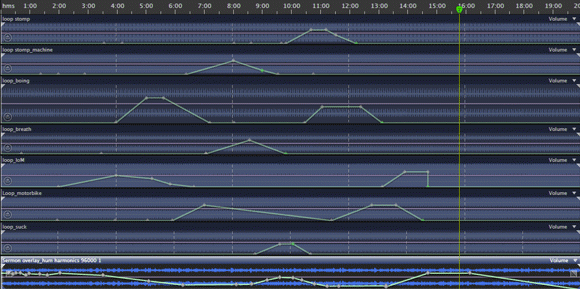
Angel, Bristol (September 16, 2017)
8.00 am: The silence had filled my study even before I’d entered. The ‘sound’ was like that on an early morning after snow has fallen, dulling the world outside … like a sorrow reconciled. It was to me a quiet benediction – a promissory that all things were in hand. ‘Be still …’. (I sensed that call.) The Hebrew word for ‘still’ (חָשָׁה) means, variously, to be silent, calm, and do nothing. However, it’s not an encouragement to either sit things out or remain in a state of paralysis. Instead, the word implies an active state of waiting, anticipating, readying, and trusting … come what may. A communion.
9.00 am: There was a conference call for papers to attend to. This was the first opportunity that I’d had since the beginning of the ‘I. Nothing. Lack.’ project to write an overview describing its rationale, nature, and objectives. The text will be serviceable to other ends, such as publicity and as a descriptor at the project’s completion and release. Writing about our work:
- encourages us to conceive of it as our audience might perceive it;
- forces us to come clean (with ourselves, in the first instance) about what we think we’re either doing or have achieved;
- structures and clarifies our thinking about concept, content, method, process, and their interaction;
- enables us to critique the integrity of such, and better remedy the deficits in the writing, and thereby, in our practice.
In short, writing makes us make better.
Throughout the morning, my research was punctuated by incoming and outgoing emails about teaching and supervision, meetings and responsibilities, allocations and dislocations. At this time of year, I’m reconciled to these necessary intrusions. Shortly before lunch, I also indulged some fatherly banter via Messenger with my younger son about photography and the ways by which young people promote the causes they’re passionate about.
1.30 pm: One of the most liberating experiences that I encountered when first at art school was in response to things like this:

There, I was able to express inordinate enthusiasm, without embarrassment, for the exquisite nuances of surfaces, lines, marks, colourations that inhered objects and phenomena that lay beyond the pale of what was commonly understood as being of interest. I was free to love with a reckless abandon nothing of importance as though it were something of enormous significance.
In between spurts of writing, I reacquainted myself with the sound system for ‘I. Nothing. Lack.’ My hands will be all over this tomorrow. There’s an undeniably sensual pleasure in the manipulation of analogue and digital devices – one that’s denied when processing sound using modifying software via a mouse and a keyboard. Physical controls are responsive and delicate; devices grow warm to the touch; some tremble exquisitely under one’s fingers; and yet others yield a mild electrical discharge affecting a tingling excitation. In other words, the machine and the machinist experience a genuine and tender relationship of exchange:

5.10 pm: ‘Stop what you’re doing, John! Look behind you’:

How many wonders either come and go, out-of-sight, or take place beyond reach? Our role as artists is to distract ourselves sufficiently, so as to catch what otherwise would be either missed or ignored on the periphery of human experience.
7.30 pm: Consolidation. The text of the conference proposal was refined, tightened, and made more persuasive. Literally, at the eleventh hour (11.03 pm), I pressed ‘send’ and dispatched my efforts to the conference convenor. Before a yielded to bed, a letter needed to be dispatched and a Message acknowledged with gladness.







































